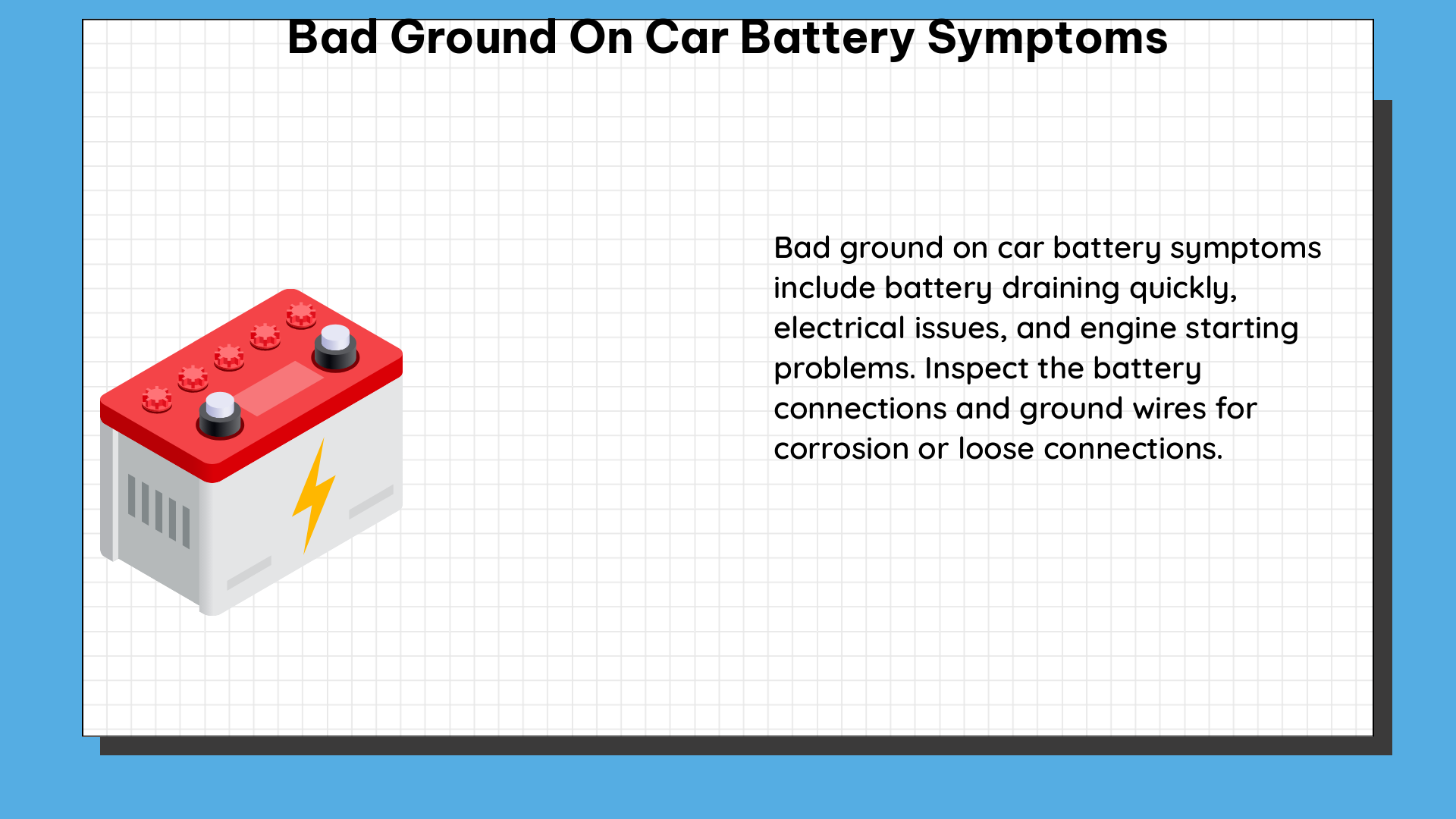A bad ground on a car battery can manifest in several measurable, quantifiable ways, primarily through increased resistance in the electrical circuit. This resistance can lead to voltage drops, flickering lights, heavy cranking, and low alternator voltage output, all of which can be diagnosed and addressed through a systematic approach.
Measuring Voltage Drops
One of the primary indicators of a bad ground on a car battery is an increased voltage drop between the battery’s negative post and the starter body or other grounding points. Ideally, this voltage drop should not exceed 0.5 volts. Any reading higher than this indicates a problem with the grounding system.
To measure the voltage drop, follow these steps:
- Set your digital multimeter to the DC voltage setting.
- Connect the positive lead of the multimeter to the battery’s negative post.
- Connect the negative lead of the multimeter to the starter body or other grounding point.
- Take the reading and compare it to the 0.5-volt threshold.
If the voltage drop exceeds 0.5 volts, it’s a clear indication that there is an issue with the ground connection, and further investigation is required.
Measuring Ground Wire Resistance

In addition to the voltage drop, you can also measure the resistance of the ground wire itself. A good ground wire should have little resistance, often just a few ohms. Any resistance higher than this could indicate an issue in the wiring harness or the grounding area.
To measure the ground wire resistance, follow these steps:
- Set your digital multimeter to the ohms (Ω) setting.
- Disconnect the ground wire from the battery’s negative post or the grounding point.
- Connect the positive lead of the multimeter to one end of the ground wire and the negative lead to the other end.
- Take the reading and compare it to the expected range of a few ohms.
If the resistance is significantly higher than a few ohms, it’s a sign that the ground wire may be damaged or the connection points are not clean and tight.
Symptoms of a Bad Ground on a Car Battery
In addition to the measurable voltage drops and resistance issues, a bad ground on a car battery can also manifest in several other symptoms:
Heavy Cranking
One of the first signs of a bad ground connection is heavy cranking, where the engine cranks slowly as if the battery is low, but the accessories are still functioning properly. This is because the increased resistance in the ground circuit reduces the available current for the starter motor, making it harder to crank the engine.
Low Alternator Voltage Output
A bad ground connection can also prevent the alternator from performing its task properly, resulting in a lower than normal voltage output. This can be measured by checking the voltage at the battery terminals while the engine is running. A healthy alternator should maintain a voltage between 13.5 and 14.5 volts.
Flickering Lights
Fluctuations in the voltage output due to a bad ground connection can also cause the vehicle’s lights to flicker or dim. This is because the voltage fluctuations can’t be properly regulated, leading to inconsistent lighting.
Troubleshooting a Bad Ground on a Car Battery
When troubleshooting a bad ground on a car battery, it’s recommended to start with a visual inspection of all major grounds, ensuring that they are still there and connected, with clean and tight connections. This includes the battery’s negative post, the engine block, the chassis, and any other grounding points.
If all the main ground connections appear to be solid, then further investigation is needed to determine if a more specific ground connection is the issue or if there is a voltage drop issue with the main battery ground. This may involve tracing the ground wiring, checking for corrosion or damage, and testing individual ground connections.
In some cases, the issue may be related to a poor ground connection at the battery itself, where the battery terminal or the battery tray may be corroded or not making a proper connection. Cleaning and tightening these connections can often resolve the problem.
If the issue persists, it may be necessary to replace the ground wiring or the battery tray to ensure a proper and reliable ground connection.
Conclusion
A bad ground on a car battery can manifest in several measurable, quantifiable ways, including increased voltage drops, high ground wire resistance, heavy cranking, low alternator voltage output, and flickering lights. By understanding these symptoms and following a systematic troubleshooting approach, you can effectively identify and address the root cause of the issue, ensuring your vehicle’s electrical system is functioning at its best.
Reference:
- Car Grounding | Bad Ground Wire Symptoms & Troubleshooting 101
- Bad Ground Connection On Cars-Meaning,Symptoms, Diagnosing …
- Electrical Symptoms and experiences with ground problems [Archive]

The lambdageeks.com Core SME Team is a group of experienced subject matter experts from diverse scientific and technical fields including Physics, Chemistry, Technology,Electronics & Electrical Engineering, Automotive, Mechanical Engineering. Our team collaborates to create high-quality, well-researched articles on a wide range of science and technology topics for the lambdageeks.com website.
All Our Senior SME are having more than 7 Years of experience in the respective fields . They are either Working Industry Professionals or assocaited With different Universities. Refer Our Authors Page to get to know About our Core SMEs.